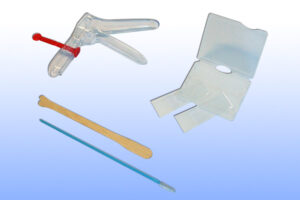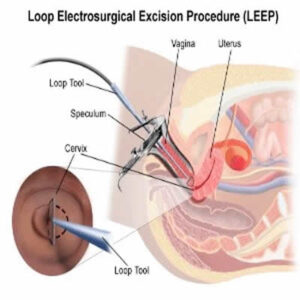The field of gynecology is a crucial aspect of women’s healthcare, addressing a wide range of reproductive and sexual health issues.
Behind the closed doors of a gynecologist’s examination room lies a specialized toolbox equipped with various instruments designed to assess, diagnose, and treat women’s health concerns.
In this article, we will delve into “The Gynecologist’s Toolbox” to understand the purpose and significance of each instrument, as well as explore the crucial role played by the senses—Eyes, Ears, Nose, and Hands—in ensuring comprehensive and sensitive care during gynecological examinations.

Speculum:
One of the most recognizable instruments in a gynecologist’s toolkit is the speculum.
This duckbill-shaped device is used to open the vaginal canal, providing a clear view of the cervix and the vaginal walls.
The gynecologist employs their eyes to visually inspect the cervix for any abnormalities, such as discoloration, lesions, or irregularities in shape.
Additionally, the sense of touch, through the hands, helps the gynecologist feel for any lumps or unusual textures.

Colposcope:
For a more detailed examination of the cervix and vaginal tissues, gynecologists often turn to a colposcope.
Resembling a pair of binoculars mounted on a stand, the colposcope provides magnified visuals of the cervical and vaginal surfaces.
The gynecologist uses their eyes to carefully observe any signs of abnormal cell growth or changes.
The sense of touch is also engaged through the hands to guide specialized instruments during colposcopic-directed biopsies.

Pap Smear Kit:
A crucial component of preventive care for women, the Pap smear is performed using a specialized kit.
The gynecologist employs their eyes to examine the collected cells under a microscope, looking for any abnormalities or irregularities.
If there’s a suspicious smell during the examination, the sense of smell may prompt further investigation, as an unusual odor could indicate an infection or other health issue.

Ultrasound Machine:
While ultrasound technology is commonly associated with pregnancy, it is also a valuable tool in gynecology for evaluating the reproductive organs.
Gynecologists use ultrasound machines to examine the uterus, ovaries, and fallopian tubes, relying on their eyes to interpret the real-time images.
The sense of touch is not directly involved here, but the information gathered helps guide the gynecologist’s hands during subsequent procedures or treatments.

Hysteroscope:
When a more direct visualization of the uterus is required, gynecologists employ a hysteroscope.
This slender, lighted instrument is inserted through the cervix into the uterus, allowing the doctor to inspect the uterine lining for abnormalities like polyps or fibroids.
The gynecologist uses their eyes to navigate and assess the uterine cavity. Additionally, the sense of touch aids in identifying any irregularities or abnormalities within the uterus.

Cryotherapy and Loop Electrosurgical Excision Procedure (LEEP):
In cases where abnormal cervical cells are detected, gynecologists may perform procedures like cryotherapy or LEEP to remove or treat the affected tissue.
These procedures involve the use of specialized instruments guided by the gynecologist’s hands, ensuring precise and targeted treatment.
During these procedures, the sense of smell may come into play, as an unusual odor could be an indicator of tissue changes or reactions.

Forceps and Biopsy Instruments:
During various gynecological procedures, forceps and biopsy instruments come into play.
Forceps are used for grasping and manipulating tissues, while biopsy instruments allow for the removal of tissue samples for further examination.
The gynecologist relies on their eyes to ensure accurate placement of these instruments, and their hands skillfully manipulate them for precise tissue sampling.
![]()
Vaginal Dilators:
Vaginal dilators are cylindrical devices used to gently stretch the vaginal walls.
They are often recommended for women experiencing vaginal stenosis or narrowing.
The gynecologist may employ their eyes to assess the condition of the vaginal tissues and their hands to guide the use of dilators during the rehabilitation process.

Laparoscope:
In cases where a more comprehensive examination of the pelvic and abdominal organs is necessary, gynecologists may opt for laparoscopy.
This minimally invasive procedure involves inserting a laparoscope, a thin tube with a camera, through a small incision in the abdomen.
The gynecologist uses their eyes to navigate and visually inspect the pelvic organs.
Their hands manipulate the laparoscope and other instruments, ensuring a thorough examination.
Conclusion:
As we explore “The Gynecologist’s Toolbox,” it becomes evident that the senses—Eyes, Ears, Nose, and Hands—play a crucial role in providing comprehensive and sensitive care during gynecological examinations.
The gynecologist’s expertise, honed through visual observation, tactile exploration, and sometimes even olfactory discernment, ensures a thorough understanding of a woman’s reproductive health.
By acknowledging the multi-sensory nature of gynecological care, we gain a deeper appreciation for the meticulous attention and compassion that gynecologists bring to their practice, contributing to the overall well-being of women worldwide.
